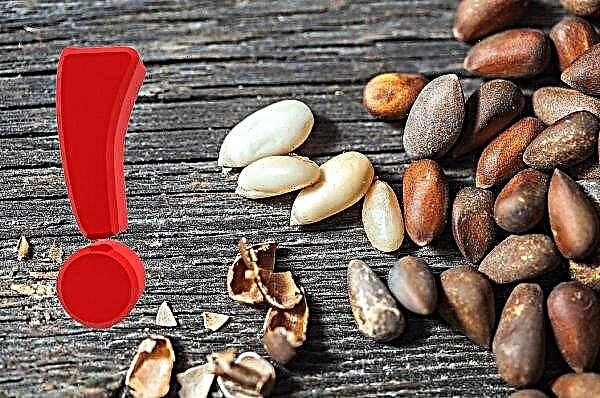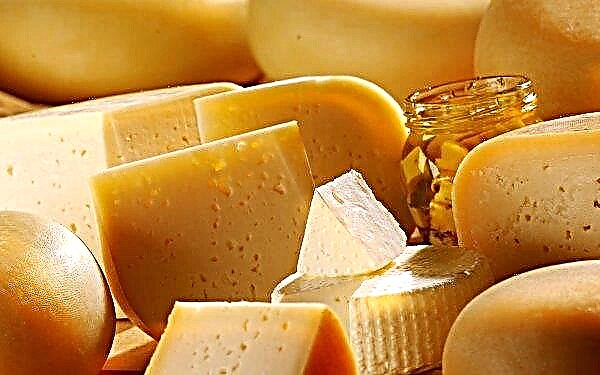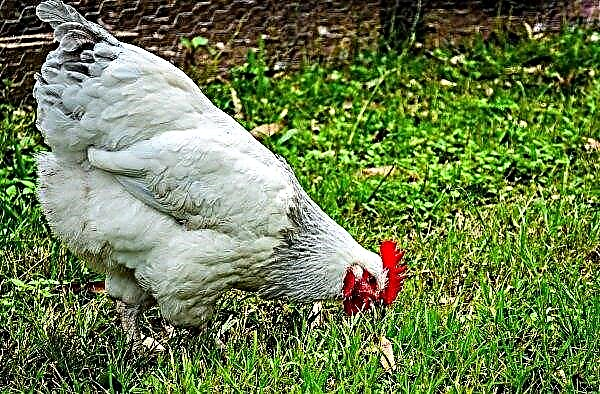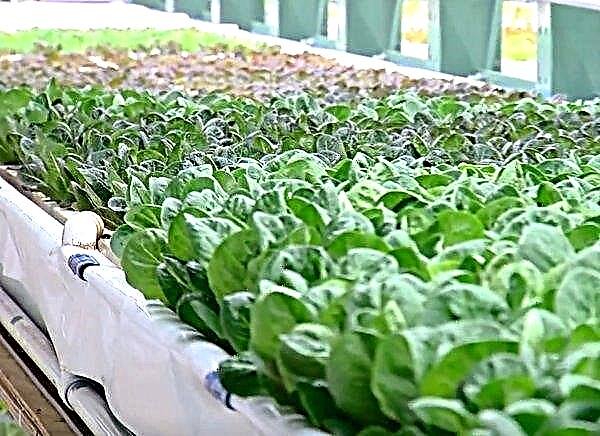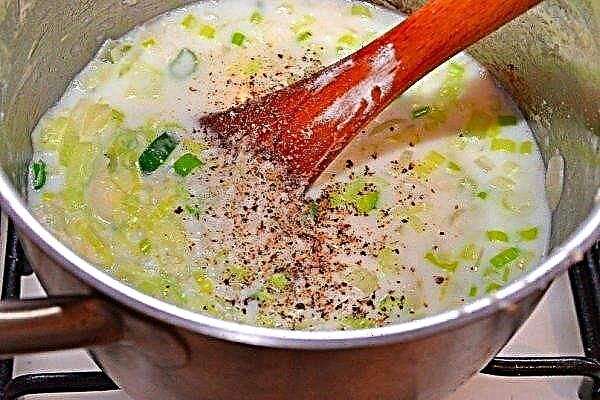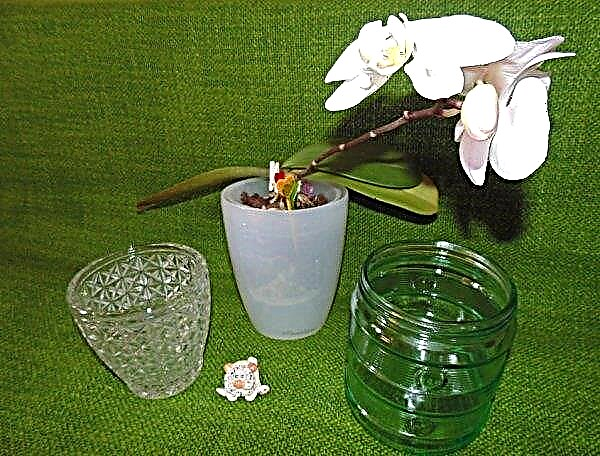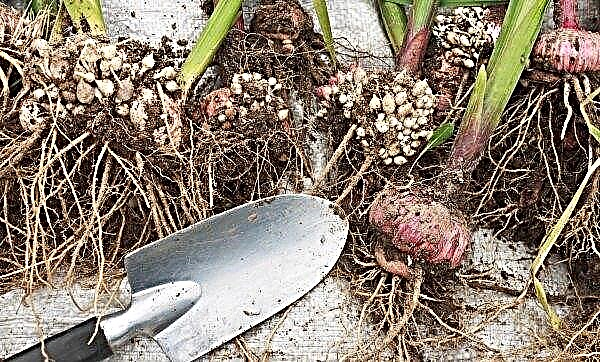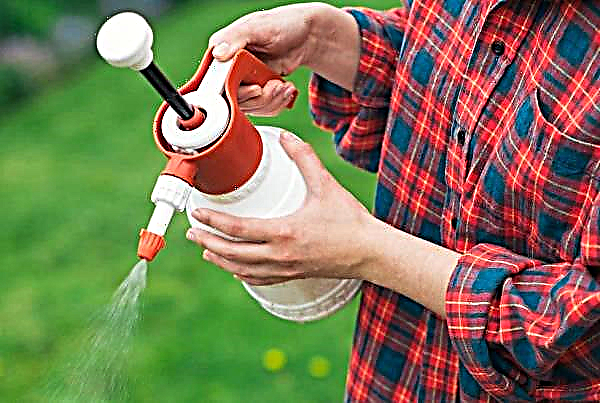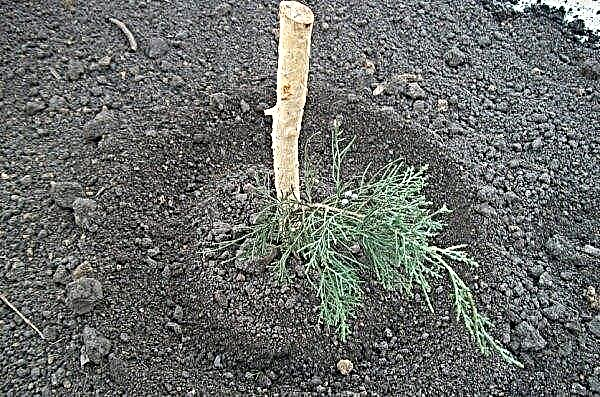Sometimes even with a small number of chickens, many of them walk half-naked, without feathers on the priest, back or neck. Some farmers do not pay attention to this, while other owners worry about such alopecia. This review article will help to understand the specific causes and features of such a phenomenon.
Symptoms of Alopecia
Before you understand the reasons for the “baldness” of laying hens, you need to know how it manifests itself, because feather loss is not the only symptom. In general, with the development of a problem, signs of its presence appear in the following sequence:
- First, bald zones form in the tail zone and on the back, and only then the feathers disappear from the sternum and neck area.
- While the plumage falls on the head, changes in the skin are noted in other parts of the body (the skin may peel off, become reddish).
- After a few weeks, the bird remains almost completely naked, losing up to 90% of its plumage.
 An additional symptom of alopecia is a decrease in egg production and body weight, but the absence of feather cover still remains the dominant symptom.
An additional symptom of alopecia is a decrease in egg production and body weight, but the absence of feather cover still remains the dominant symptom.
Did you know? Alopecia is also characteristic of people, and more so for males. If hair loss begins at the age of twenty, then by the age of forty, most men definitely have a bare area on the back of their head. Influencing it is almost impossible.
Causes of Feathers
Baldness in chickens is rarely associated with the presence of infectious or inflammatory problems in the body. But this does not mean that this phenomenon is normal.
Among the answers to the question why chickens lose feathers, the following are most often distinguished:
- wrong diet (lack of calcium, phosphorus, sulfur and iodine);
- violation of the living conditions of chickens (non-compliance with sanitary-hygienic conditions of detention, limited lighting of the space and insufficient amount of fresh air);
- seasonal molting (at this time, birds should eat twice as intensive; if the supply of nutrients with the feed is limited);
- infection with parasites (mainly feathers and lice, mites that feed on the upper layer of the skin, thereby causing severe itching);
- plucking each other (some birds may even eat their relatives' feathers, but this is most often explained by inadequate nutrition and maintenance conditions: when young animals lack vitamins and minerals, or if there is little space in the chicken coop, increased attention to their "neighbors" is inevitable).
Often the owners attribute this problem to the natural molting process, but normally it does not last more than a few months and always goes in a strictly limited sequence: first the feathers disappear from the head, then from the neck, chest, back, wings, sides - and only then from tail. The chicken should not seem completely bald, because during natural processes, mainly the lower layers of plumage fall out, and the upper feather remains in place. In young individuals, a phenomenon such as all-weather molting (juvenile) can be observed. Usually it begins a month after the appearance of the chickens and marks the replacement of the first, soft, plumage with a harder and denser. Outwardly, this manifests itself in complete baldness, and even on the pope, which looks intimidating. The duration of such changes is approximately 4 months, but by full puberty the hens again become “dressed”.
In young individuals, a phenomenon such as all-weather molting (juvenile) can be observed. Usually it begins a month after the appearance of the chickens and marks the replacement of the first, soft, plumage with a harder and denser. Outwardly, this manifests itself in complete baldness, and even on the pope, which looks intimidating. The duration of such changes is approximately 4 months, but by full puberty the hens again become “dressed”.
Important! In roosters, natural molting is accompanied by a hormonal surge, which often causes fights. This should be taken into account when keeping several males in a limited space.
How to treat this pathology
Methods of treating a pathology directly depend on the causes of its appearance, but in any case, compliance with the following recommendations will not hurt.
Adjust feeding
If baldness of chickens is observed in the summer, then try to include more vegetables and greens in the diet of birds, in addition to which it is useful to give out:
- calcium (in the form of chalk / crushed gypsum);
- potassium iodide;
- manganese sulfate;
- meat and bone meal;
- sulfur.
 All this can be purchased at a veterinary pharmacy. To give, mixing with usual food of hens in the dosages strictly recommended by the producer. Once a day, you can add to the water a few drops of iodine or a very weak solution of potassium permanganate.
All this can be purchased at a veterinary pharmacy. To give, mixing with usual food of hens in the dosages strictly recommended by the producer. Once a day, you can add to the water a few drops of iodine or a very weak solution of potassium permanganate.
Useful products for alopecia hens can be considered:
- legumes;
- cabbage;
- roots;
- cake;
- oats;
- balanced feed mixtures (in winter).
Improve detention conditions
The conditions for keeping the bird directly affect its well-being and appearance, therefore, so that the birds stay healthy and the loss of feathers ceases, you should adhere to the following recommendations, including regarding the arrangement of the chicken coop and the yard for walking.  So here is what you need to do:
So here is what you need to do:
- if necessary, replace the litter in the chicken coop (it should always remain dry);
- stabilize the temperature inside the room, maintaining it at the level of +22 ... + 23 ° C;
- eliminate the slightest drafts (but at the same time ensure a good flow of fresh air through the ventilation holes);
- maintain the humidity level in the room (not more than 60%);
- if necessary, increase the daylight hours inside the house using ultraviolet lamps (especially if the hens do not go for a walk in the yard);
- organize a walk so that the birds can be at least a few hours a day in the fresh air under sunlight that is useful for them (the calculation of the walking area depends on the number of livestock and breed of hens: on average, at least 0.5 sq.m per chicken );
- regularly disinfect and clean the chicken coop, treating walls, drinking bowls, feeders, perches and nests (at least 1 time in two weeks);
- when keeping a large number of chickens in a limited area once every few days, remove accumulated droppings, which will prevent the appearance of an unpleasant odor of ammonia (cleaning the room with cleaning feeders is done once a week).
Did you know? Hens are able to remember people's faces and store up to 100 images in their memory. This is noticeable already in the way they react to the person who was good to them, and the one who chased or beat them.
Maintaining cleanliness and controlling the temperature and light regime together with a balanced diet will allow birds to provide almost ideal living conditions (which means that their health problems will disappear).
Get rid of parasites
Chicken fleas, ticks and worms often become the main "suspects" in the issue of baldness of birds. Ticks and poohoedy secrete a substance resembling cotton wool, in which they continue to actively grow and multiply. Therefore, to exclude their activity, it is enough to examine the bird for the presence of such a nest (usually it is noticeable to the naked eye). Fluffy and peroids often hide at the very base of the feather, but, like fleas, leave traces of their life activity throughout the body. It is not so easy to notice the worms, therefore, in the presence of signs of helminthic invasion (this can be a refusal of food, general exhaustion, growth retardation and impaired oviposition), the bird is treated prophylactically.
It is not so easy to notice the worms, therefore, in the presence of signs of helminthic invasion (this can be a refusal of food, general exhaustion, growth retardation and impaired oviposition), the bird is treated prophylactically.
In addition to the mentioned parasites, mice or rats can annoy chickens. Often, these rodents attack birds, leaving behind not only torn feathers, but also quite noticeable wounds on the body of chickens. In each of these cases, the owner will have to select the most effective methods to eliminate the causes of baldness of the livestock, and both pharmacy medications and folk methods will help him in this.
Using pharmacy products
If the cause of feather loss is a violation of the diet and lack of nutrients, then you can correct the situation by using B vitamins, calcium (mono- and tricalcium phosphate), potassium iodide, meat and bone meal and sulfur (2-3 mg per bird) . In addition, such pharmacy preparations are useful to the poultry breeder:
- Chiktonik. A vitamin drug of complex action, which perfectly eliminates the lack of trace elements in the body of chickens. For adults, 2 ml of the composition is diluted in 1 liter of water and evaporated for a week, daily preparing a new dose. For chickens, the dosage of the substance is reduced and only 1 ml of the composition is diluted in 1 liter of water.
- "Gamavit." Often prescribed to a bird with weak immunity. To prepare the solution, it is necessary to dilute 5 ml of the drug per 1 liter of water, and then fill the drinkers so that the chickens drink it for several hours (you can thirst in birds by restricting access to water an hour before the drug is dispensed).
- "Ganasupervit." A multivitamin supplement that can be given to chickens either with water (0.5 g per 1 liter) or mixed with food (1 kg per 1 ton of feed mixture).
- Desi Spray. It has wound healing properties. Use in the presence of wounds on the surface of the skin of chickens (just spray it on a damaged surface).
- "Operin." Feed supplement that helps restore plumage. Premix is given together with the main food in the calculation of 5 g per 1 kg of feed mixture.
- Front Line Antiparasitic agent supplied in the form of a spray. It is effective against ticks and skin parasites. To process animals, you only need to spray the substance onto the surface of the body.
- Ivomek. Antiparasitic drug that effectively eliminates helminths and nematodes. It is usually prescribed to pets in the form of injections, but can be mixed in a bird by drinking: 0.4 cubes of the drug are diluted in 0.25 liters of water.
- Insect acaracid powders for chicken coop processing. They help to get rid of ticks, fleas, hair and lice, which can hide on the surface of walls and various objects located in the house. 150 g of the substance should be enough for 1 m of the territory, and when processing birds, the required amount of powder is calculated based on the proportion of 10-15 g per 1 chicken.


Using folk methods
The simplest of the popular methods of getting rid of skin parasites is ash baths. Hens with pleasure bathe in dust and sand, thereby relieving themselves of fleas and ticks. To increase the effectiveness of the procedure, it is better to add the same clean ash to the clean and sifted sand. It will not be superfluous to include diatomaceous earth in the mixture, mixing it in equal proportions with the rest of the components. Ash baths can be organized daily.
Important! Disinfection of the premises can be performed only after all the chickens from it have been transferred to another barn.
Another “folk” remedy for preventing baldness in chickens is a mineral supplement made from shredded horn and livestock hooves. A small amount of the obtained flour is mixed in the chickens food until they stop shedding. In the absence of horny parts of cattle, you can replace them with collected and well-chopped chicken feathers, which also contain a significant proportion of cystine.
How to treat chicken wounds?
Such pharmaceutical preparations as Desi Spray or Chemi Spray, which have anti-inflammatory and antibacterial effects on feathered skin, will help restore the skin and provide faster healing of wounds. Before using both drugs, it is important to clean the affected area from contamination (preferably using hydrogen peroxide) and only after that spray the product, keeping the bottle at a distance of 5-10 cm from the surface of the chicken body. Nevomikol ointment also has good wound-healing properties, which is applied to the surface with a thin layer. In some cases, the ash baths described above will help to eliminate minor damage and scuffs. Here you no longer need to control the chicken: she will bathe herself in the tank left with sand and ash.
In some cases, the ash baths described above will help to eliminate minor damage and scuffs. Here you no longer need to control the chicken: she will bathe herself in the tank left with sand and ash.
Important! To reduce the cravings of birds for pecking their own kind will help crushed shell rock and calcium supplements in food.
Preventive measures
Given the possible causes of feather loss, it is not difficult to identify preventative measures to prevent this from happening. By them are meant:
- maintaining cleanliness in the chicken coop (with periodic disinfection of all surfaces);
- organization of a balanced diet, which necessarily includes calcium-containing products, fresh herbs or vitamin-mineral supplements (in the cold season);
- placement of sand-ash baths inside the chicken coop and periodic replacement of sand and ash in them;
- the use of only wooden and plastic products when installing feeders or drinking bowls (metal containers will be oxidized);
- regular walking of chickens in the fresh air or the organization of good ventilation indoors;
- maintaining the proper level of temperature and humidity;
- adequate lighting;
- pest control (this also applies to mice living in the chicken coop).
 Only a comprehensive approach to the prevention of chicken alopecia can help prevent this problem from occurring. If you are late and the feather loss is already noticeable, try to cure the birds using one of these methods.
Only a comprehensive approach to the prevention of chicken alopecia can help prevent this problem from occurring. If you are late and the feather loss is already noticeable, try to cure the birds using one of these methods.

